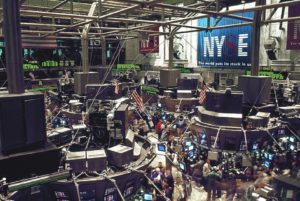
Market Review and 2020 Forecast
 Market Review and 2020 Forecast
Market Review and 2020 Forecast
By Kelly Olson Pedersen, CFP®
Last year proved to be a great year in the markets for stocks and bonds alike! Here’s a market review of what we saw in 2019. After taking a hit with rising interest rates in 2018, bonds bounced back nicely when the Fed then lowered rates. Large cap equities soared with growth stocks leading the way and outpacing their value counterparts. While the S&P ended the year up over 30%, the average portfolio was up about 16% if you had any bond allocations, cash and private equity.
Here’s a summary of what we saw in 2019 and what we anticipate 2020 will look like in each area.*
CAISSA Strategies
2019: Swift movement from passive to active strategies in fixed income paid off in spades. We missed much of the negative returns handed out in 2018 only to participate in much of the increase in 2019 – all thanks to interest rate movements and quick action by the CAISSA investment team. We remained highly overweight growth to value in equities and had a small underweight internationally. Hedges have been added throughout the year in preparation for 2020 and beyond. We have also added to our private equity positions, which was up 14% for the last 12 months and was actually a bit of a drag for portfolios. On the flip side, in 2018 it was up 7.34% when the S&P was down -4.4%. This will be a nice volatility dampener when we need it.
2020E: We have started to increase weightings in specific areas internationally with downside hedge and very little currency hedge. We feel the dollar has leveled and any weakening will benefit local currencies. We will also be moving from a double weight of growth to value to an equal weighting. Additionally, we will keep small and mid-cap weightings neutral. We’ll keep dripping into lower correlating asset classes to squeeze volatility. We anticipate a volatile ride prior to the election but a decent year for the equity market overall. With a little guidance for legislation to come from the White House, corporations may start to move some cash around later in the year.
Tailwinds and Headwinds
2020E Tailwinds: US consumption is the closest to its highest share of global Gross Domestic Product (GDP) since 2008 and they are still optimistic. US wages, household debt, housing, labor markets and consumer delinquencies are all doing well. In addition, inflation looks to remain low. All of these indicate that the economy can grow at a reasonable pace and still create gains. That being said, gains will likely be much less than last year.
2020E Headwinds: CEOs are less optimistic than consumers, which tends to yield less profits. US manufacturing is struggling and starting to worsen, much to do with the trade tensions. Valuations of stocks are high with the low interest rate environment we are in. 2019 growth was mostly due to multiple expansions and not due to earnings growth. Gains this year might be limited due to rising input costs, such as labor. If wage inflation picks up or corporations cease stock buybacks and do not end up spending on capital expenditures, this would not bode well for the stock market.
US Growth (measured as GDP or Gross Domestic Product)
2019: The US started the year trending above a 4% growth acceleration after the effects of the tax bill were kicking in. Unfortunately, the trade tensions pulled that growth outlook back and we ended the year around 2.9% GDP. Weak CEO confidence held back a lot of previously expected capital expenditures. CEO confidence is a huge driver of profits.
2020E: We estimate growth to slightly rise to between 3-3.25% for 2020, with most of the bounce coming from eased traded tensions. However, the presidential election could have an effect on this should corporations pause for the year until they know what lies ahead for them when it comes to taxes, laws, etc.
Consumer Strength
2019: The strength of the consumer was a huge driver of the economy. The Consumer Confidence Index is at another all-time high which warrants attention as peaks usually are followed by recessions. Wage increases were a factor in consumption and spending. Per Ned Davis Research, investor sentiment is back to extreme optimism, which is also a leading indicator for a rollover to recession.
2020E: We anticipate a bit more wage inflation and consumers to maintain consumption levels barring an economic event that would halt confidence. This would support the market to high single-digit returns.
Inflation
2019: Inflation was all but non-existent in 2019. Wage inflation ticked up slightly but we did not get the core inflation anticipated by the Federal Reserve, which precipitated the eventual rate cuts that happened. However, we did get asset inflation, so balance sheets are higher but that asset inflation did not trickle down.
2020E: We anticipate a bit more wage inflation which likely leads to spending and a continued strong consumer in the US. We expect the US to stay around 2.1% core inflation. Europe is stuck around 1% and Japan cannot get inflation going at all.
Interest Rates
2019: Multiple mid-cycle rate cuts happened in 2019, pushing the 10-year treasury to low points and pulling back the earning power for short-term cash from 2.25% to 1.65%. Much of the rest of the world held 0% to negative interest rates which makes holding cash in the US an attractive investment.
2020E: We expect rates to stabilize in the US and are likely to stay steady in Europe without any meaningful inflation. International rates at these lows will likely hold down the rates in the US as well.
Trade Tensions with China
2019: Trade tensions took the wind out of the growth that was booming from the recent federal tax bill. J.P. Morgan estimates the trade tensions reduced 2019 earnings growth by about 7-8% and was the primary factor in decreasing the growth acceleration for the GDP from 4.1% to 2.9% by the third quarter.
2020E: After phase one of the trade deal, many barriers still exist. Intellectual property being stolen is a large issue that still needs to be dealt with. The administration may still impose tariffs that are now past deadline. However, if there were a turn for the better in China, we think Europe would be the initial benefactor of that before the US as they lost more due to their large import/export relationships with China. The US has significantly less.
Elections
2019: A variety of potential election outcomes and trade tensions led to corporations hoarding their cash and less capital expenditures. Brexit risks have decreased and should moderate further.
2020E: Prospects for meaningful legislation is likely going to come in the form of executive orders. Presidential election years tend to elevate volatility for fear of the unknown. Headlines are likely to get amplified market responses. However, regardless of the outcome, most politics can be stripped out and values found in different sectors around the world and in the US. History tells us the markets will find the values regardless of politics. Volatility is at its height immediately surrounding the election.
US Equities
2019: The largest component of growth in equities were multiples and we actually had a contraction of earnings. Growth outpaced value by a wide margin again but value started to creep in at the end of the year. Valuations inched back into heated territory and many of the stock exchanges hit record highs. Our portfolio managers for US equities as an asset class each exceeded their corresponding benchmark, so we at CAISSA are happy about that!
2020E: We anticipate more growth coming from earnings as compared to 2019 and little from multiples with dividends remaining much unchanged. Growth could land us in the high single digits if economic indicators remain stable and geopolitical issues are kept at bay.
Recession
2019: While we are in the 126th month of a recovery, it has been the most anemic recovery in history. Bull markets don’t die of old age, they usually need inflation to strangle them off. We watched the Conference Board’s Leading Economic Indicators (LEI) closely and didn’t see the inflation that could do this in 2019. Our team never got behind the notion (and the many news headlines) that a recession was near. We were saying the opposite, and we were correct!
2020E: While the risks of global recession have risen slightly, the absence of inflation does lessen that notion. In the US, we are still seeing a very strong consumer and weak inflation where we’d need it to tamper the market. The LEI is indicating a stable growth economy and while there were a couple of indicators that went from stable to a bit worsening, they are still within ranges of a stable economy. CAISSA is not flashing warning lights on a recession unless we create one with a self-fulfilling prophecy where consumer behavior is altered due to the fear of what could happen and then we create that very thing. We have had three mid-cycle slowdowns which could bode for a rebound after elections depending how corporations view the outcome.
Caissa Wealth Strategies is a fee based registered investment advisory firm, specializing in personal, dynamic wealth management. Based in Bloomington, Minnesota, Caissa financial planning professionals provide individualized strategies for every client. You can expect more from CAISSA, and in turn, you will get a fiercely loyal advocate on your side. For more news and information on wealth management solutions, visit Caissa Wealth.
*The information provided is based on information provided by you and is only an estimate based on that information. Caissa Wealth Strategies does not offer tax planning or legal services, but may provide references to accounting, tax services or legal providers. They may also work with your attorney or independent tax or legal advisor. A qualified tax professional or independent legal counsel should review the tax implications of any securities transaction. This material is not intended to replace the advice of a qualified attorney, tax advisor, financial advisor, or insurance agent. Before making any financial commitment regarding the issues discussed here, consult with the appropriate professional advisor.